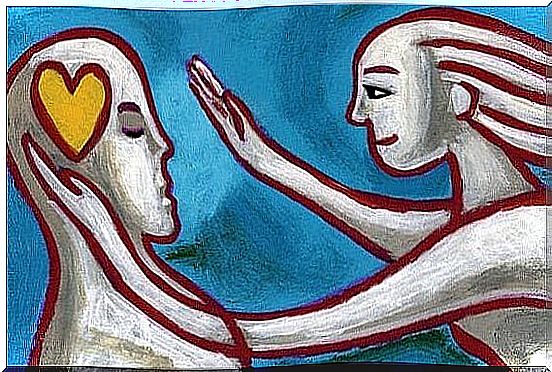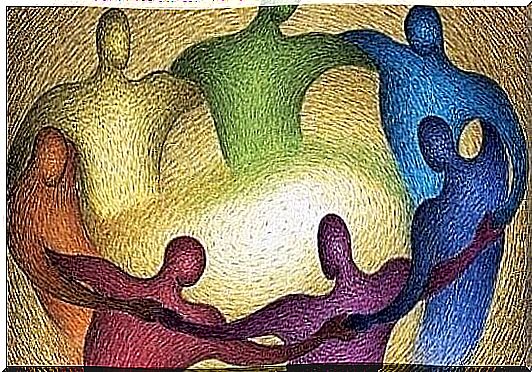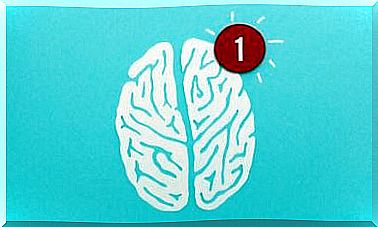5 Gestalt Techniques For Personal Growth

Gestalt techniques help us focus on our current lives to encourage self-realization and make better decisions, as well as grow on a personal level in a freer way that is more in line with our needs.
We all have the right to build the kind of life we want, and this approach – with clear humanistic influences – invites us to do so.
Fritz Perls, the forerunner of Gestalt Therapy, said that our main suffering as human beings is the gap we open between the present and the future. Sometimes our minds go faster than life itself, and we expect things.
We become obsessed with things that have not happened yet. And almost without realizing it, we are filled with fear, anxiety and other things that cause pain.
So, one of the goals of Gestalt Techniques is to help us understand our problems in a global, more consistent way. In parts, but as a whole.
In this way, instead of worrying about why something happened or what caused it, this view suggests focusing on understanding how this set of circumstances affects us.
Let us understand that the idea we may have of the past or the future is due to how we live in the present. Gestalt techniques have this and other goals to encourage personal growth.
They also help us to become aware of who we are, what we feel and need, and help us to use it responsibly.

Gestalt techniques to encourage personal growth
Gestalt psychotherapy techniques are basically about what Fritz Perls called “rules and games”. These are strategies – dynamic, very original and varied in essence – that try to make us more aware of the world around us in order to overcome resistance and make personal growth easier.
Let’s look at some examples…
1. Pending issues
Pending problems refer to past events that affect our present. They are emotions we have not taken care of, blocked emotions, personal knots that keep us from living life to the fullest in the present.
According to Gestalt, we all have outstanding problems with friends, relatives, exes and our loved ones who have passed away.
- We must not avoid them. Instead, we must be able to shed light on these feelings in order to stop clinging to suffering, loss, or even anger.
- To do this, we can perform a simulation, a mental process to reunite, confront them and say goodbye.
- We can mentally evoke the person and express what we need to say. We will expose the pain, vent our grief, guilt or bitterness. Once we have revealed and recognized them, we let them go. We will then close the circle and move on.
2. Dialogue technique: The empty chair
Many will be familiar with this technique. It is well known, often useful and represents the essence of Gestalt very well.
Sometimes it is used as a way to meet imaginary projections of other people. The goal is to trigger the grieving process or resolve trauma.
But, for personal growth, it has another purpose: to start an internal dialogue where we set “our opposites” against each other. By using this technique we can have a dialogue with ourselves.
On the one hand, we place what creates discomfort. On the other hand, we place the part that wants to face the discomfort of living a more productive, free and open life. Here is a way to do it:
- I get so tired, I have no strength.
- You take away my strength again, you take up too much space in my life. Tell me what’s wrong with you.
- I do not like myself. And I do not like the life I live.
- Fine, instead of complaining, tell me what you want to do to feel better.

3. I am responsible
One of the best Gestalt techniques is the “taking responsibility” game. It looks simple, but it requires a lot of commitment. The purpose is to help us be more aware of what is going on inside us. To perceive it, accept it and then encourage more active behavior using these changes.
Here is a brief example.
“My head hurts and my stomach hurts too. I know I’re thinking things over and I’m stressed. I am responsible for that, and I accept that I have to make changes. ”
“I realize I have a voice. I am responsible for speaking honestly, without fear, and for respecting myself and others. ”
4. Practice the continuity of consciousness
In Gestalt Therapy, the therapist works with the person’s “how” experiences. Not “why”. They want to understand how the patient faces problems and how they live with them. How the person feels them and internalizes them.
To do this, we must have space to identify how the current feelings and sensations are in the person. We evoke this information by saying things like “tell me how you feel”, “tell me how you feel”, “explain to me what you can see right now”.
And we can also perform this technique alone. We can practice the continuity of consciousness, so that all sensations, thoughts and feelings are created.
It’s not about looking at or internalizing them. It is about making the light shine on them and keeping them present in our thoughts.

5. Turn your questions into affirmations
This is another Gestalt technique that can seem very simple at first glance. But it is very valuable therapy. It helps us to declare internal realities and mobilize resources.
How can we do that? It’s easy. We have all had one of those days when we say to ourselves, “Why do I feel this way? Why do I feel so hopeless and powerless? ”
Gestalt suggests the following: Ask questions for self-affirmations. Let’s look at some examples.
- Why do I feel so bad today? Today I feel bad. I will do my best to change this feeling and make tomorrow better.
- Why do I feel like my boyfriend is getting away? My boyfriend is far away. I have to ask him if that’s a problem.
Finally, Gestalt techniques are as original as they are functional when it comes to helping ourselves achieve contact with our needs. They also invite us to take responsibility. To be brave about how we feel. And to act accordingly to grow.
Why not put these strategies into practice? They work.









